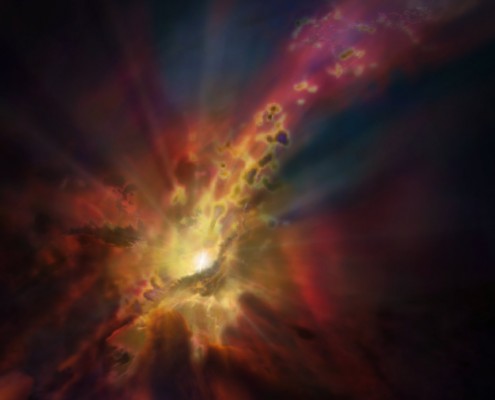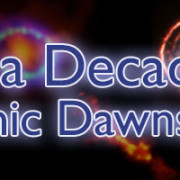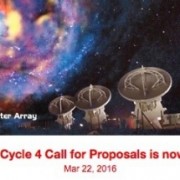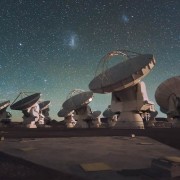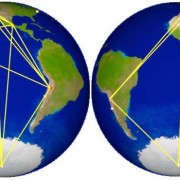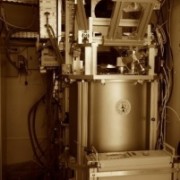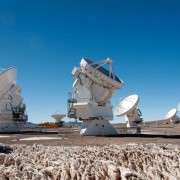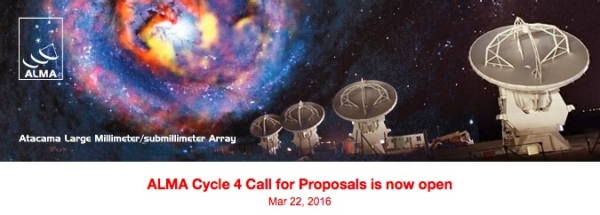
The ALMA Director, on behalf of the Joint ALMA Observatory (JAO) and the partner organizations in East Asia, Europe, and North America, is pleased to announce the ALMA Cycle 4 Call for Proposals (CfP) for scientific observations to be scheduled from October 2016 to September 2017.
It is anticipated that up to 3000 hours of the 12-m Array and up to 1800 hours of the Atacama Compact Array (ACA), also known as the Morita Array, will be available for successful proposals from Principal Investigators (PIs) in Cycle 4. Proposals must be prepared and submitted using the ALMA Observing Tool (OT), which is available for download from the ALMA Science Portal (www.almascience.org). Proposals will be assessed by competitive peer review by a single international review committee.
ALMA Cycle 4 proposal submission will open at: 15:00 UT on Tuesday 22 March 2016
The ALMA Cycle 4 proposal submission deadline is: 15:00 UT on Thursday 21 April 2016
ALMA provides continuum and spectral line capabilities for wavelengths from 0.32 mm to 3.6 mm, and for angular resolutions from 0.024†to 3.7†on the 12-m Array. Cycle 4 offers several new technical capabilities, including Solar, millimeter-wavelength Very Long Baseline Interferometry (mm VLBI), spectral-line linear polarization, and ACA stand-alone observations. In addition, for the first time ALMA will accept Large Proposals, which are programs that request more than 50 hours of time on the 12-m Array or the ACA in stand-alone mode to address key scientific questions. Up to 15% of the available time will be allocated to Large Proposals.
For comprehensive information of this Cycle 4 Call for Proposals please consult the ALMA Science Portal.

